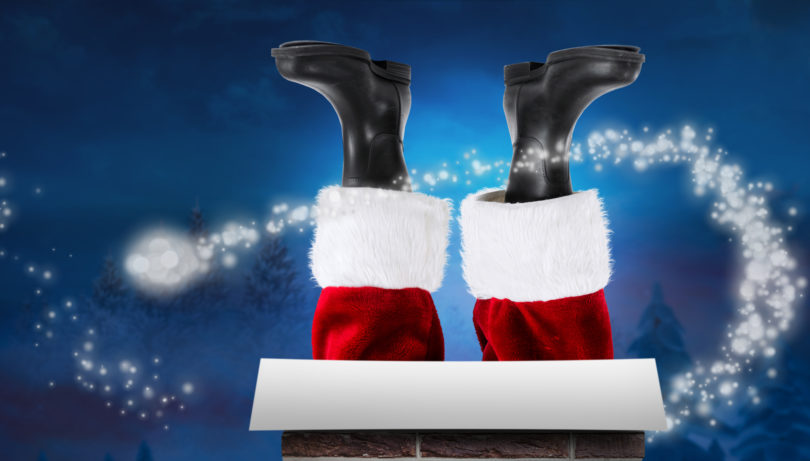Is Santa Trespassing?

Imagine the scenario: It is late on Christmas Eve. Mr. and Mrs. Grinch have hung the stockings by the chimney with care, milk and cookies have been carefully placed by the lighted tree, and the Grinch children all nestled and snug in their beds. Suddenly, up on the rooftop there arose such a clatter created by eight tiny reindeer and one jolly ol’ St. Nick. The bearded and red-suited man with a little round belly now stands in your living room with a bag full of toys. You have one question in mind – Has Santa committed an intentional tort by trespassing onto the Grinch’s real property? That is, has Papa Noel, aka Kris Kringle, made an unauthorized entry onto and/or into the Grinch’s abode? Assuming the Grinches had legal title and actual (or constructive) possession of the home at the time of Santa’s entry, the answer is a resounding silver bell, “maybe!”
In order for the Grinches to meet their burden of proof, they would need to show a Texas court that Santa entered the Grinch’s real property; that the chief elf’s entry was physical, intentional, voluntarily, and unauthorized; and some injury was caused to the Grinch’s right of possession. However, Santa himself does not need to actually enter onto the Grinch’s property to make him liable. Ol’ St. Nick could still be held responsible if he caused or assisted in causing “Hermey, the Dentist Elf” to enter onto the property or even if he caused “something” to physically invade the Grinch’s real property. In other words, Santa could possibly be held liable if he flew his “Sleigh One” drone down the chimney to determine who was awake. It matters not Santa’s motive for entering the Grinch’s property, the torts element requires only that St. Nick intended to enter the real property.
However, the crux of this cause of action, generally lies in the analysis of whether entry was “authorized.” Because the burden of proof is on the Grinches, we must examine whether they may have authorized Santa’s entry onto their property by either actual, apparent, or implied consent. The Grinches could simply assert that neither Santa nor North Pole, Inc., had received nor even requested authorization to enter their real property, and therefore there was no consent. It is foreseeable the “Big Man” would counter that he was given permission by the Grinch’s children to land his team on the Grinch’s roof and come down the chimney with lots of toys. However, Santa’s argument would probably be short lived after the Grinches convinced the Court that the children had neither the capacity nor authority to grant Santa and his team permission to “trespass.”
Instead of Christmas adversity hinging on “Rudolph’s Red Nose,” the question of whether Santa intentionally trespassed upon the Grinch’s real property would come down to implied consent. Santa should advocate an affirmative defense that he had “implied consent” to land his reindeer on the Grinch’s roof and come down their chimney. He should take the position that based on the Grinch’s own conduct and actions, he clearly was provided with implied consent. (Note to readers: I am a neutral advocate, however I also want to avoid the “naughty” list). Santa should put on evidence of the Grinch’s hanging stockings above the fire place, lighting their Christmas tree, and finally (the smoking gun) the laying out of milk and cookies! Based on the totality of these circumstance, I believe the actions and conduct by the Grinches would give ample indication of their implied consent and authorization for Santa to enter onto their real property.
I want to encourage each of us this holiday season, “Don’t be a Grinch!”
We at Stibbs & Co. wish each of you joy, peace, and happiness for this coming New Year – 2021!




